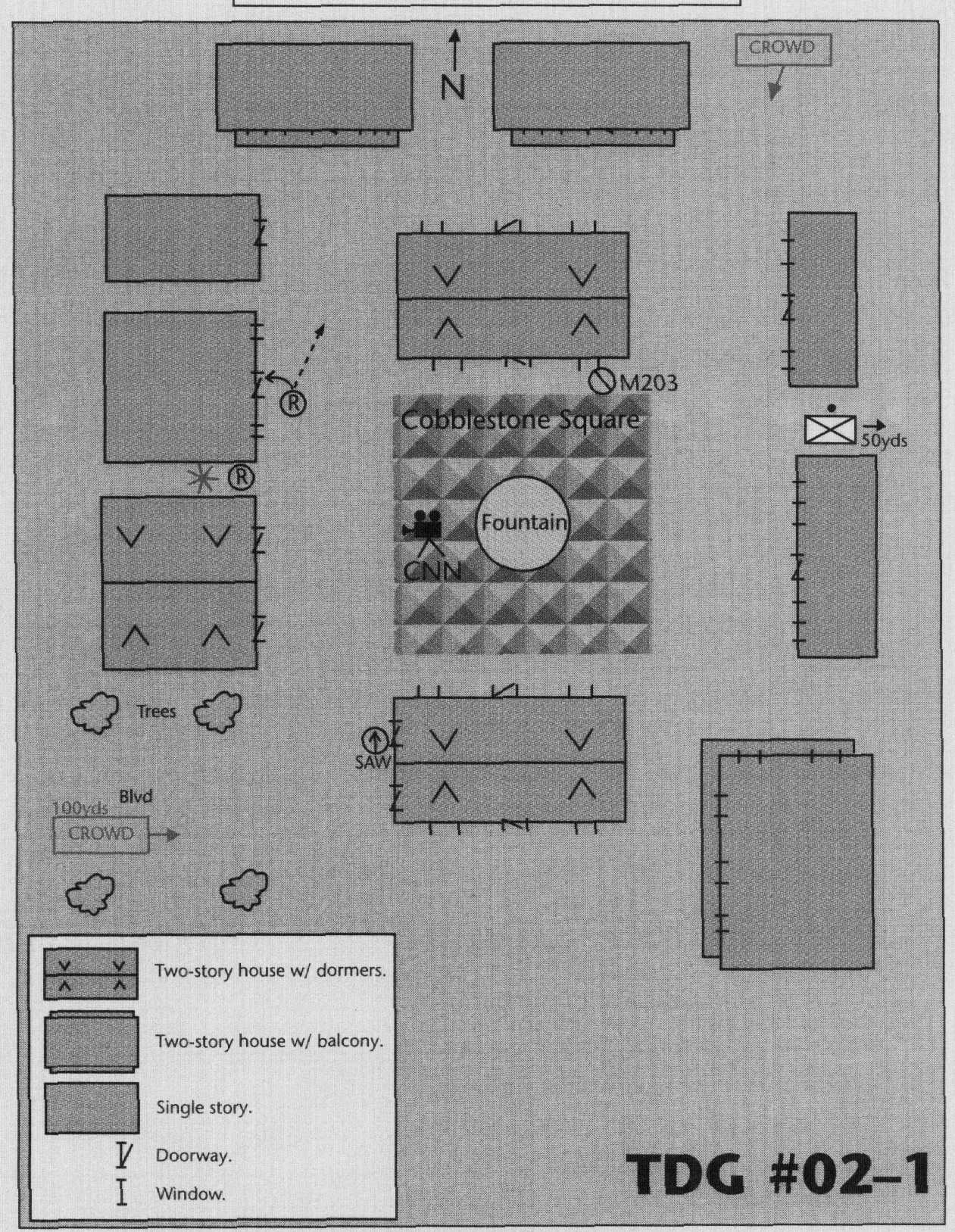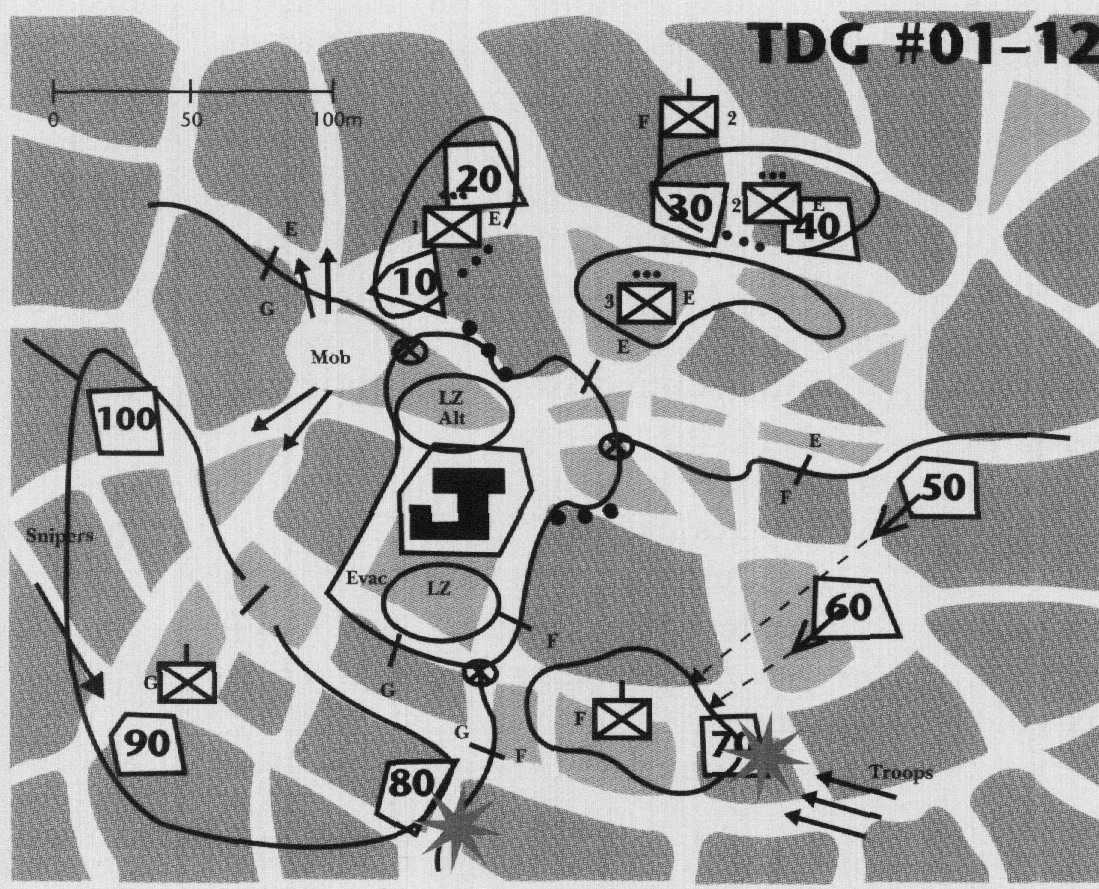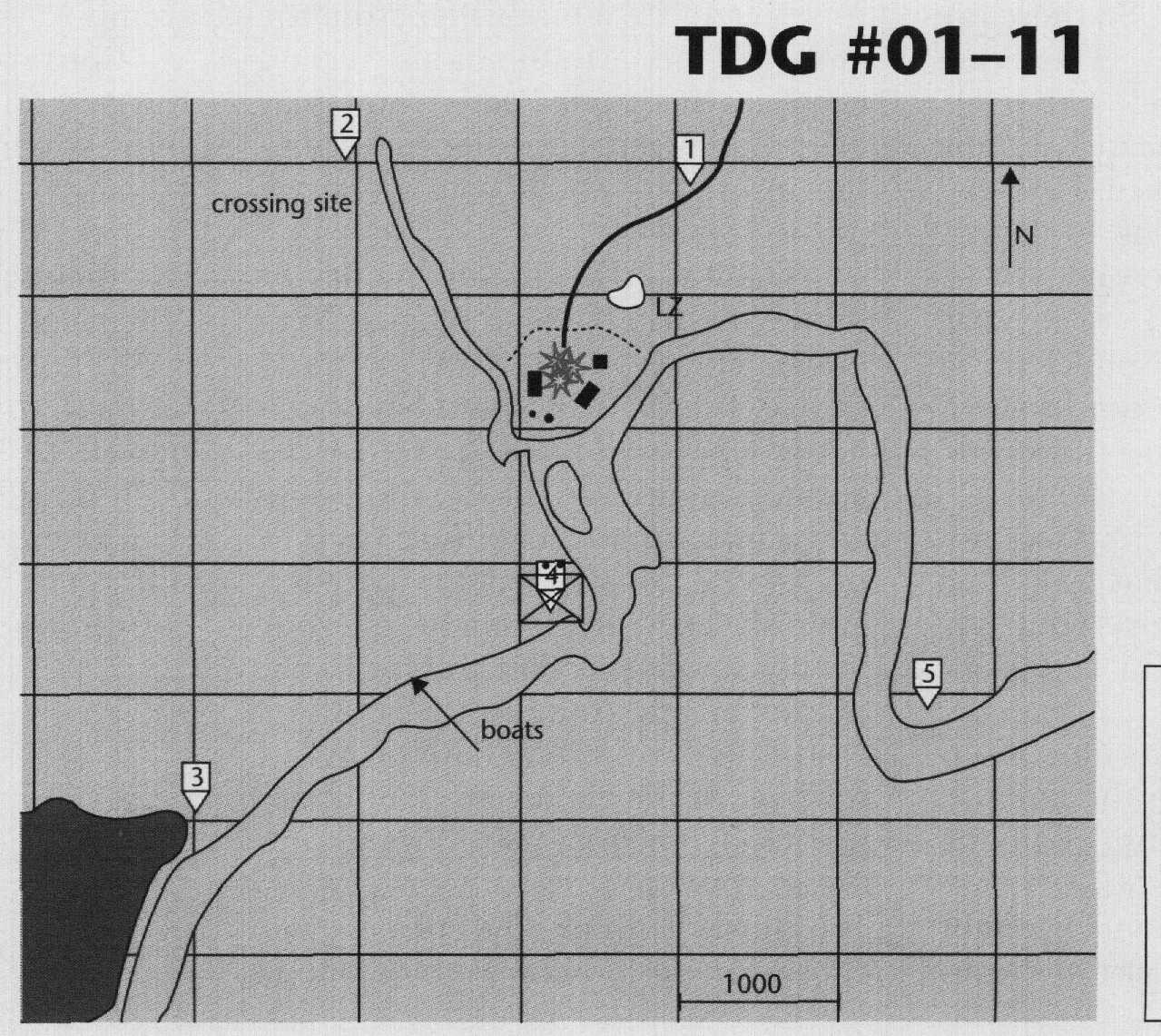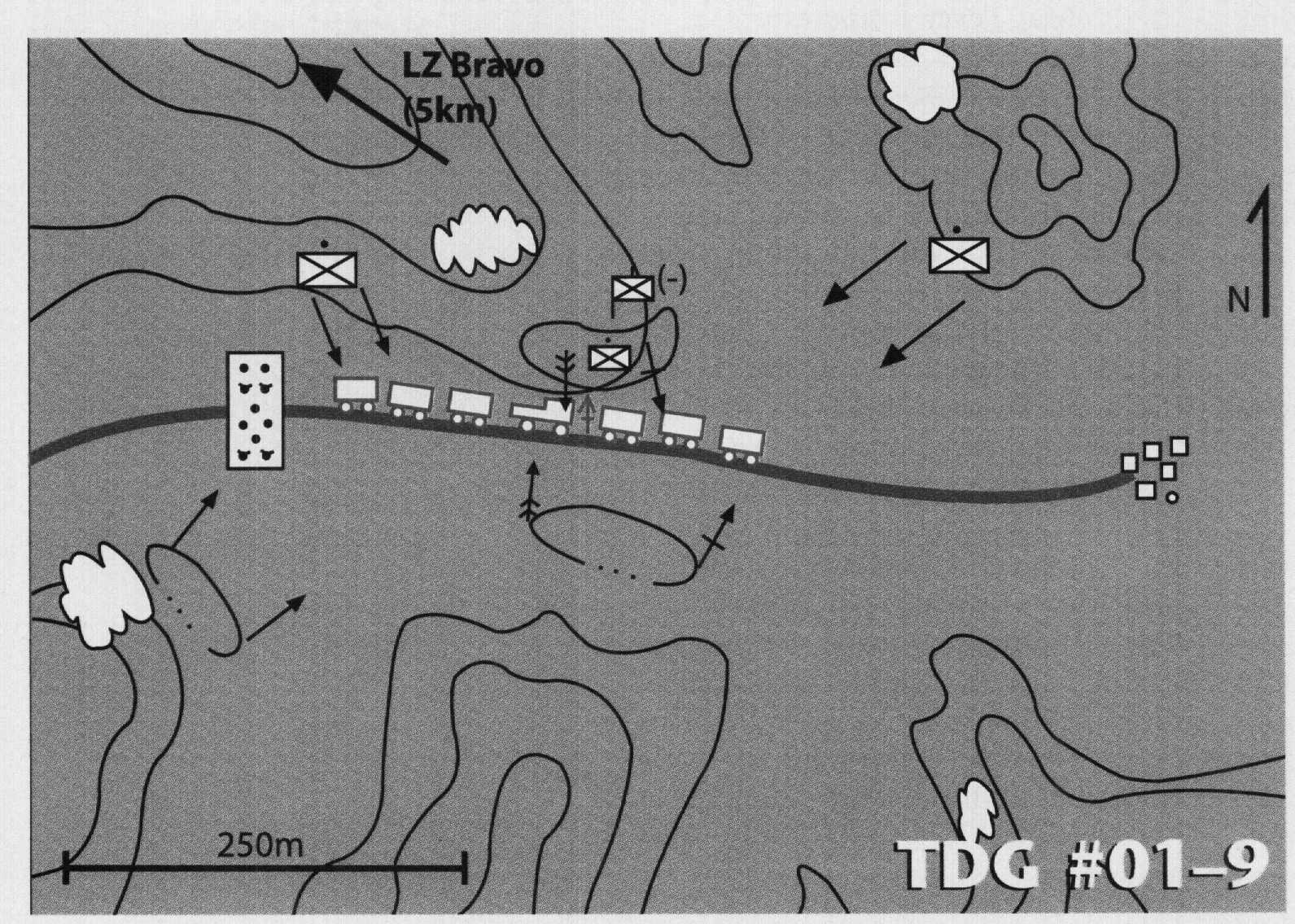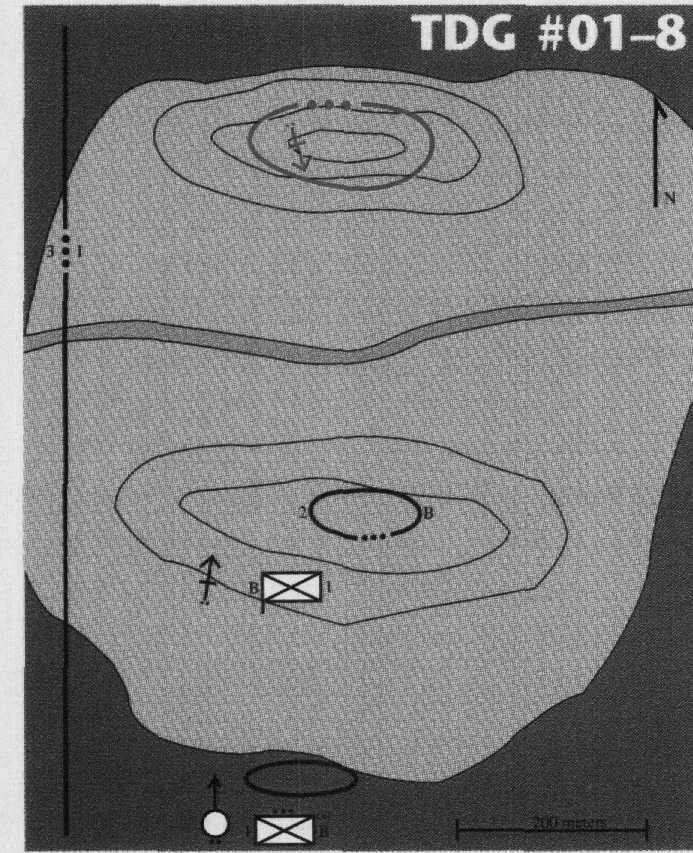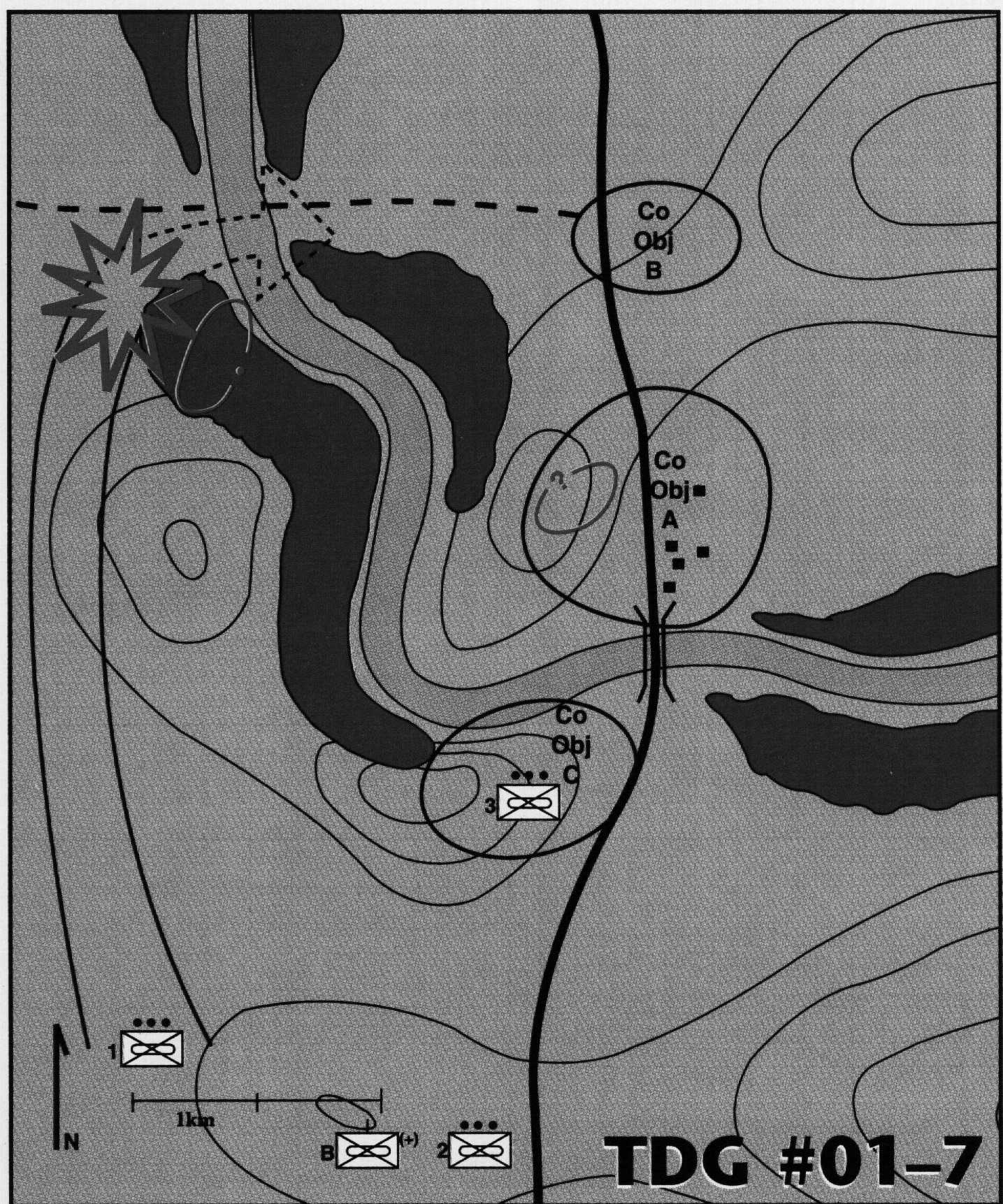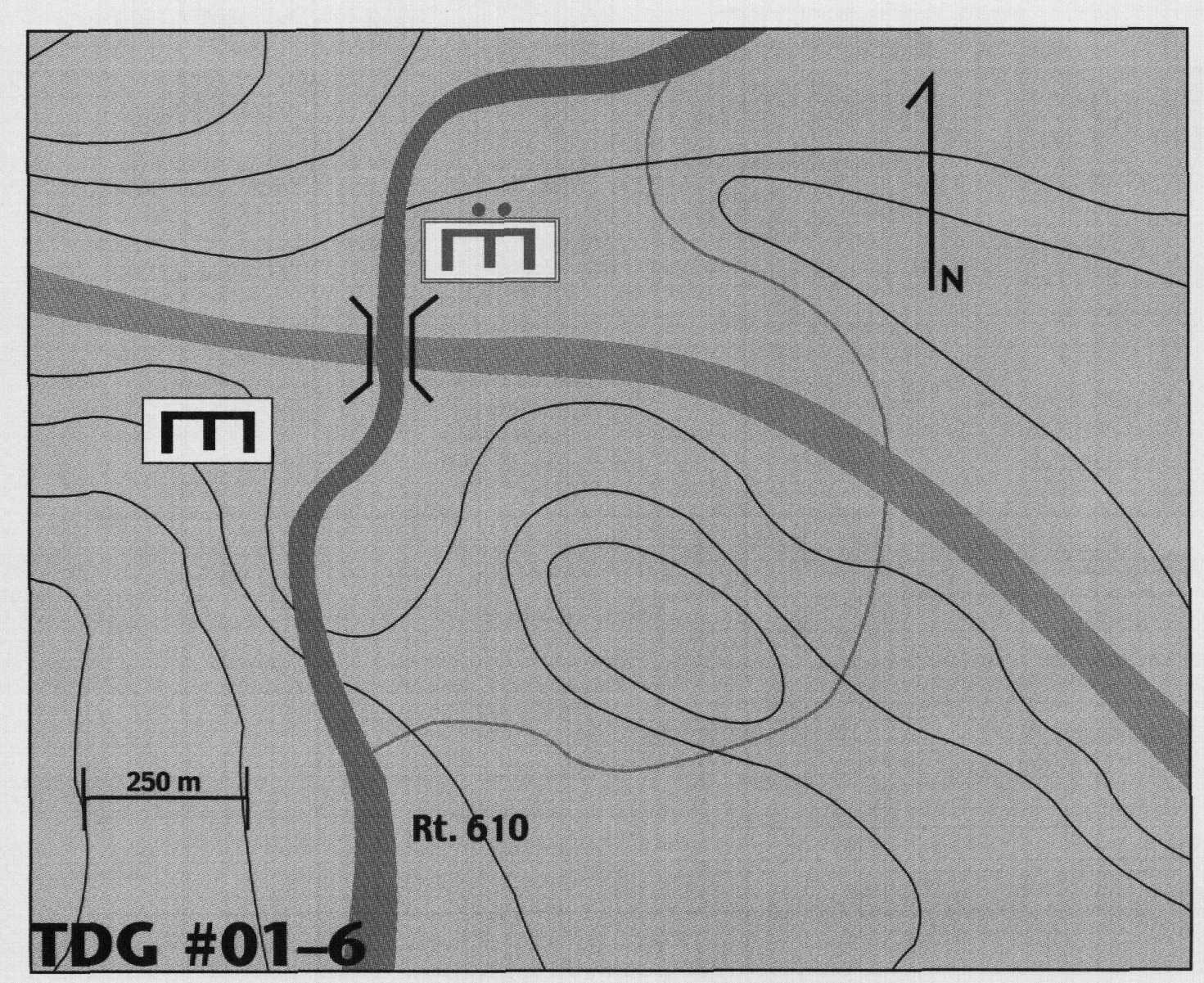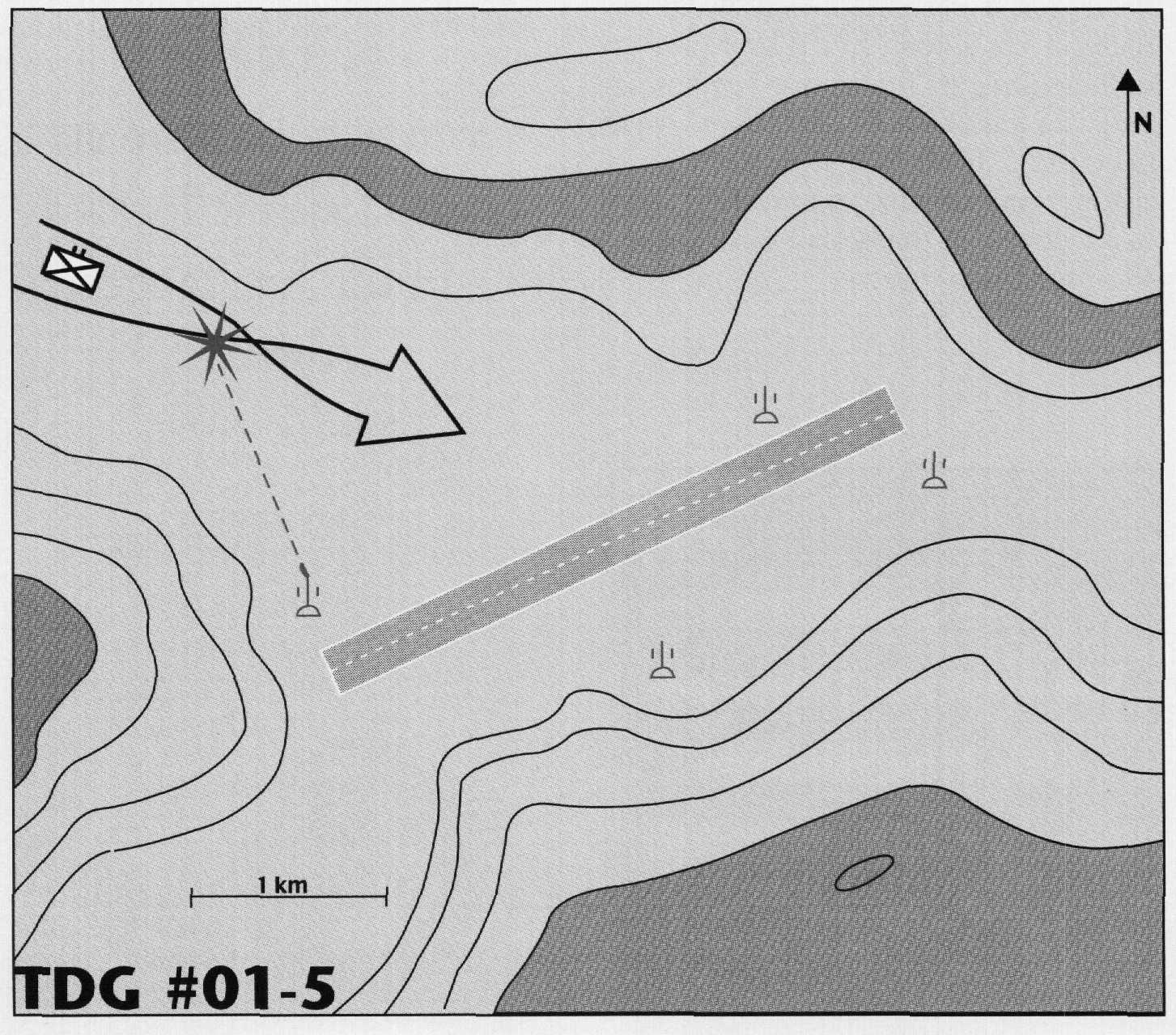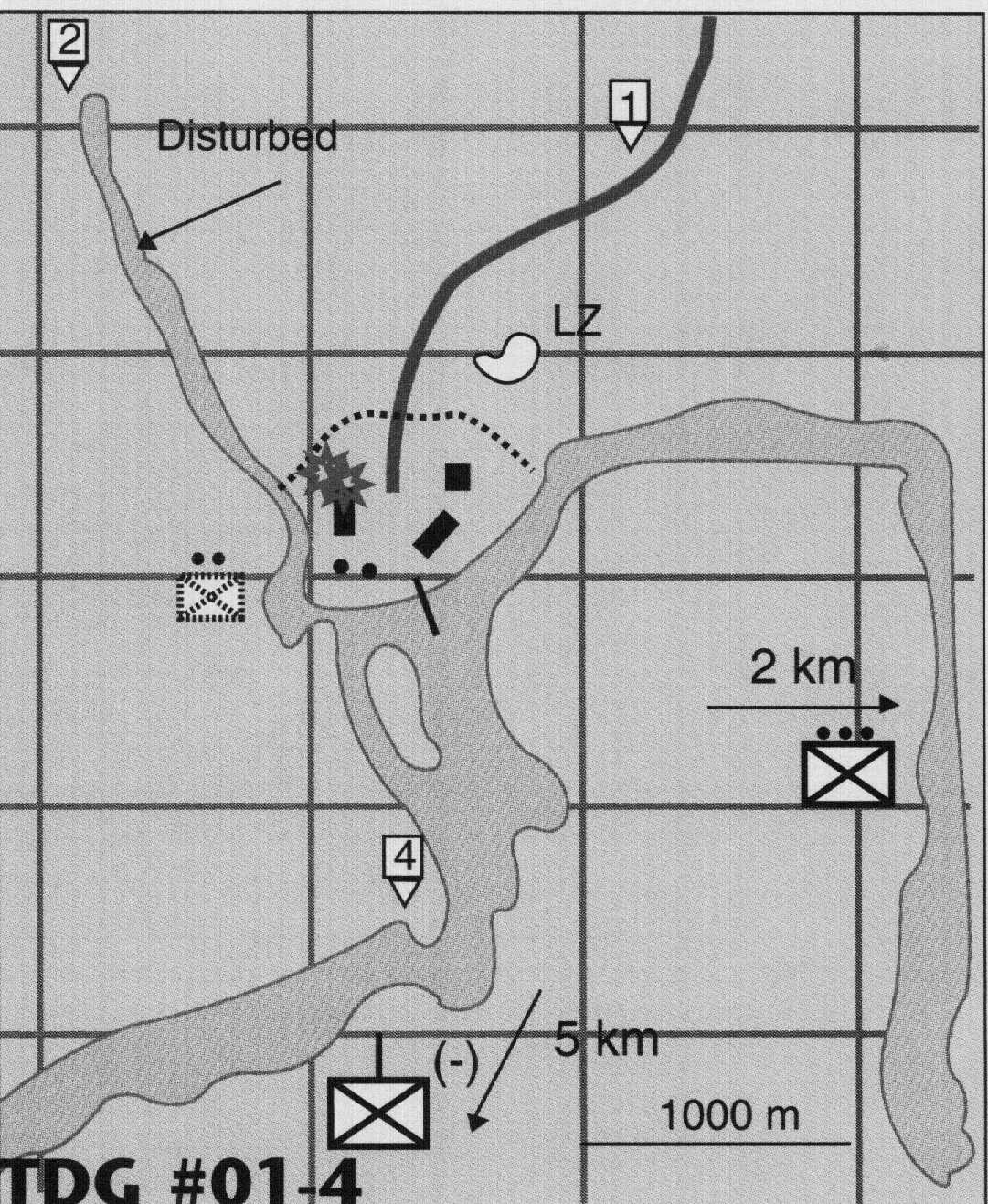By Maj Terry Branstetter
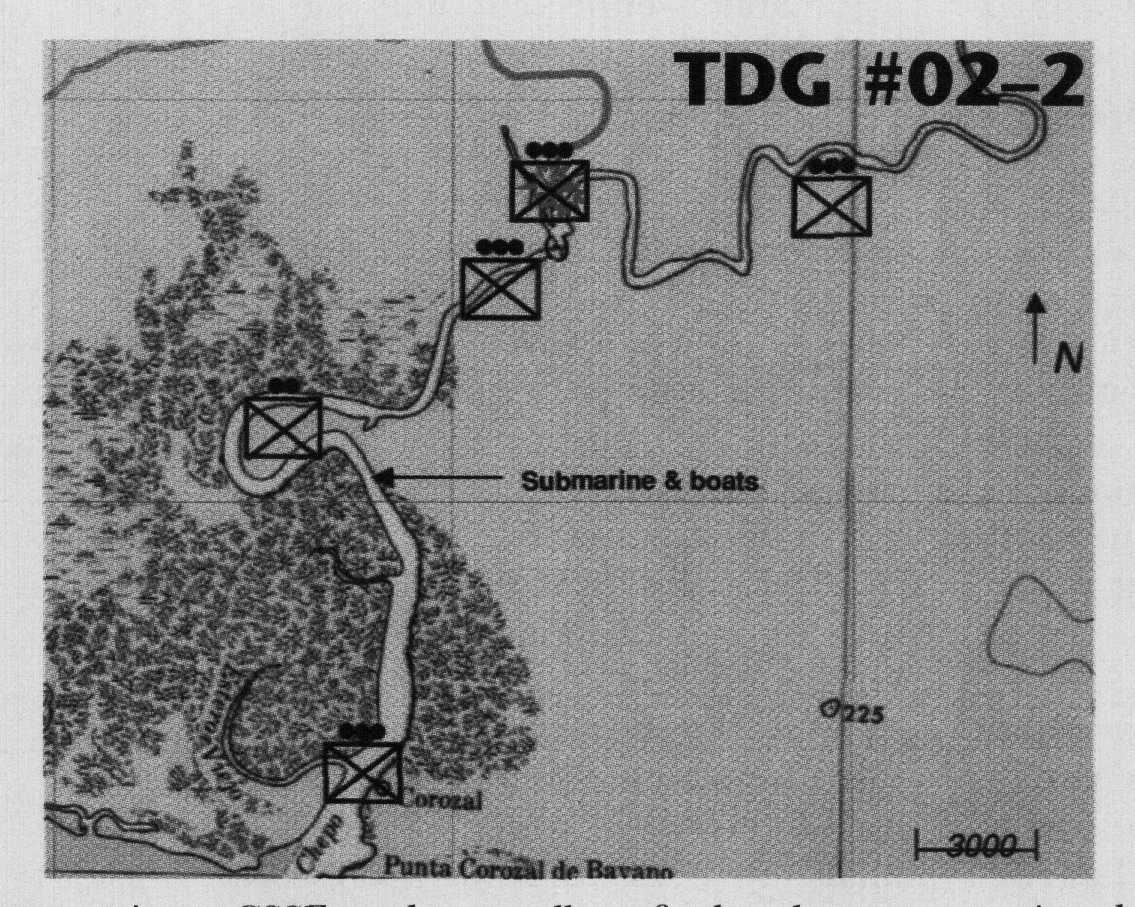 Tactical Decision Game #02-2 General A special purpose Marine airground task force (SPMAGTF) has been deployed to the coastal region of Southlandia to take an active role in America’s war on drugs. The coastal plain of Southlandia is tropical with thick vegetation. Rivers are the major means of transportation and communication. On these rivers narcotic traffickers transport their products from inland camps, where the drugs are manufactured, to the coast where they are exported by sea and air.
Tactical Decision Game #02-2 General A special purpose Marine airground task force (SPMAGTF) has been deployed to the coastal region of Southlandia to take an active role in America’s war on drugs. The coastal plain of Southlandia is tropical with thick vegetation. Rivers are the major means of transportation and communication. On these rivers narcotic traffickers transport their products from inland camps, where the drugs are manufactured, to the coast where they are exported by sea and air.
The narcotic traffickers in Southlandia have been growing more and more technical in their means of producing and exporting. Manufacturing locations are small, widely dispersed camps that are moved frequently and apparently randomly. While some drugs are driven and some flown from the inland, most are transported via river to the coastal area where ocean and air transportation is more available. There are even rumors that submarines may be incorporated to ship drugs.
The SPMAGTF is based at a small airbase near the third largest village in the province. The command element is augmented with several provincial police, a liaison officer from the U.S. Coast Guard, and a detachment from the U.S. Drug Enforcement Agency. The SPMAGTF is part of a Marine Corps led joint task force located in Southlandia’s capital. The MAGTF is composed of an aviation combat element built around four CH-53Es. The ground combat element (GCE) consists of a lightly equipped infantry battalion and a detachment from the division’s small craft company (two riverine assault craft and six rigid raider craft (RRCs)). Companies conduct operations along the Pacora and Chepo Rivers. The combat service support element (CSSE) provides general support to the MAGTF and provides direct support to the GCE in the form of one forward logistics base supporting riverine operations along the Chepo. Situation
You are an infantry company commander (Hawk 6) conducting counterdrug operations along the coastal plain of Soud-flandia. Your company currently has duty along the Chepo River; you relieved a sister company 3 days ago. You operate from a base camp where a CSSE and a small craft detachment support you. To facilitate operations you have organized your company into four homogeneous platoons. Your company has seen nothing of the volume of river traffic that they had last week. It looks as if the drug traffickers have taken their business elsewhere.
Currently, you have one platoon at the base camp resting and conducting maintenance after returning from a lengthy patrol to the north. A second platoon is patrolling to the east of the Chepo. You are with the third platoon south of the base camp conducting some insertion and extraction drills with three RRCs. The fourth platoon is working with the remaining small craft to patrol the Chepo.
Over the company tactical net you hear the CSS officer in charge calling for help. He says that the base camp is under attack. He reports many wounded and is uncertain they can hold on.
You are near the bow in the river, maybe 15 minutes away. You depart to reinforce the base camp with three RRCs and as much of one platoon as will fit. That leaves you with about a squad and a half of Marines at the river bend.
Nearing the base camp, you hear gunfire and see a lot of smoke. You radio to the camp to coordinate your arrival but get no answer. Then the platoon sergeant leading the Marines left at the bow in the river (remnants of 3d Platoon) reports that they just saw two small boats and what looked like a submarine heading toward the coast. When they attempted to halt the craft the two boats opened fire, and they continued down the river. What now?
Requirement
In a time limit of 2 minutes, issue your orders to your company. Provide the rationale for your actions and a sketch of your plan. Submit your solution to Marine Corps Gazette, TDG #02-2, P.O. Box 1775, Quantico, VA 22134, fax 703-630-9147, or e-mail <[email protected]>.


